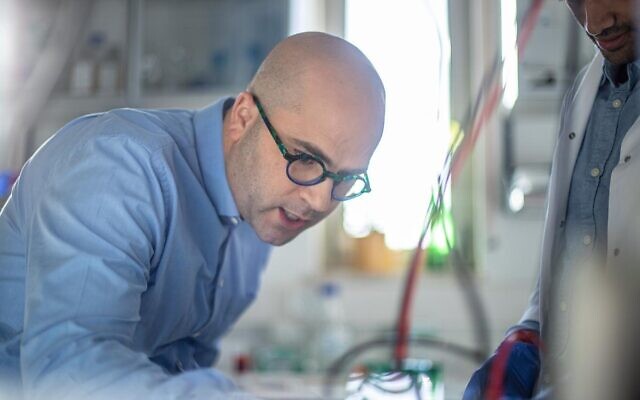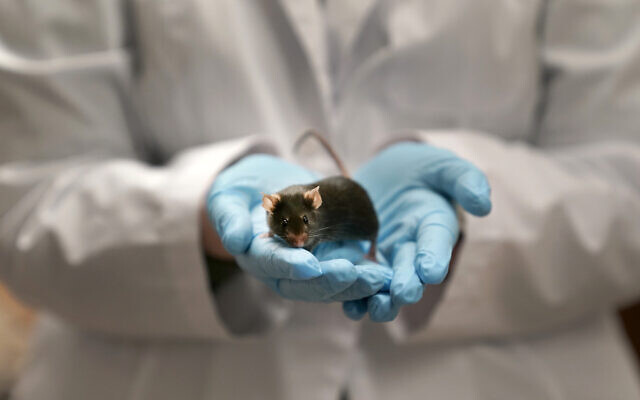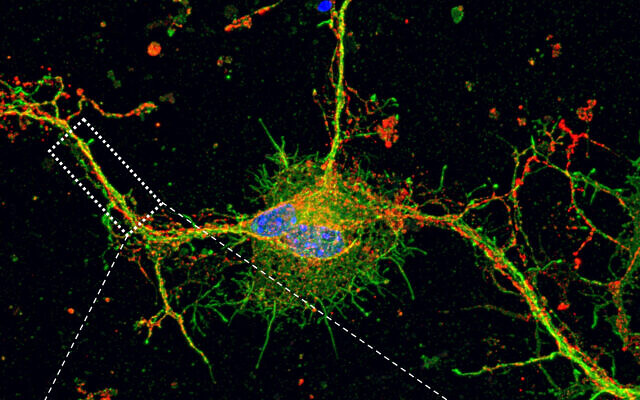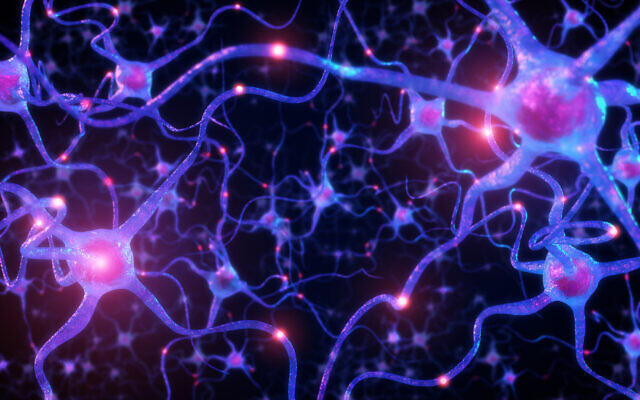New Israeli study shows link between autism and nitric oxide levels in brain neurons
Peer-reviewed research at Hebrew University’s Pharmacy School could lead to drug treatments for people with autism and other neurological conditions
Renee Ghert-Zand is a reporter and feature writer for The Times of Israel.
Researchers at The Hebrew University of Jerusalem have found an apparent connection between the level of nitric oxide in brain neurons and autism spectrum disorder (ASD).
The study, published in the peer-reviewed Advanced Science journal, comes from the lab of Dr. Haitham Amal of the School of Pharmacy of the university’s medical faculty.
Researchers hope the findings could open the door to drugs to treat people with autism and other neurological conditions.
Amal and his group investigated both mice and humans and found that higher levels of nitric oxide correlate with brain changes and higher levels of autistic behaviors.
Autism, a neurological and developmental disorder, affects one in 100 children worldwide, according to the World Health Organization. Autism diagnoses rose in Israel by 169 percent between 2007 and 2018.
Autism’s causes appear to be both genetic and environmental. Autism spectrum disorders (ASD) are a diverse group of conditions characterized by difficulty with social interaction and communication. Autism can also involve atypical patterns of activities and behaviors, such as difficulty with the transition from one activity to another, hyper-focus on details, and unusual reactions to sensations.
While many individuals are diagnosed in childhood, others do not learn they are on the spectrum until they are adults. A 2021 Israeli study indicated that children who receive a diagnosis by age two and a half, as well as early intervention, have a significantly better prognosis.
“The idea for this research [on nitric oxide] started years ago when I was a postdoc at MIT,” Amal told The Times of Israel.

“We identified proteins that were modified by nitric oxide and we developed a tool to identify these kinds of modifications,” he said.
Nitric oxide is a colorless gas with the formula NO. It is a free radical and one of the principal oxides of nitrogen. Nitric oxide is an essential molecule for many aspects of health.
When Amal, originally from Haifa, arrived at The Hebrew University in 2019, his team began investigating whether nitric oxide plays a key role in autism. They took normal mice without any autism-related genetic mutations and injected them with nitric oxide donors.
“We found severe changes in the brain and also autistic-like behavior,” Amal said.

Then the researchers turned to mice with mutations very similar to those found in children with autism. They discovered high levels of nitric oxide in these mice. Following this, they introduced into the animal subjects a molecule to reduce nitric oxide in the neurons in the brain.
“We found a reversal in that neuronal function and a reversal in the autism-like behaviors,” Amal reported.
Amal and his team took the study a step further by investigating blood samples of children with autism. Similar to their findings in mice with genetic mutations for autism, the researchers identified an increase in nitric oxide among the children.
“The final step was that we took stem cells from these kids and we differentiated these cells into neurons. Then we introduced molecules that reduce nitric oxide and we saw a reversal in the neuronal serotype,” Amal said.
Amal observed that an elevation in nitric oxide levels affects nitrosative stress, presumably leading to neuronal dysfunction that converges into behavioral deficits. However, he still doesn’t know what the threshold levels are that make the difference.

“The results of this research project conducted by Dr. Amal and his colleagues are very intriguing,” said psychiatrist and autism expert Prof. Yoav Kohn.
Kohn, director of the child and adolescent psychiatry ward at Eitanim Psychiatric Hospital and former chairman of the psychiatry department at Hebrew University-Hadassah School of Medicine, was not involved in the study but reviewed it at the request of The Times of Israel.
“Their work was carried out very meticulously, involving studying biochemical changes as well as behavior. These were examined in cell cultures, animals, and humans. Doing so they were able to demonstrate a new mechanism to explain the etiology and pathophysiology of ASD. The clinical implications can be dramatic, but first, their findings in a small sample of ASD patients need to be replicated,” he said.
Notably, Amal’s study investigates both males and females. Amal said that other labs tend to focus only on males because the condition is much more prevalent among males, with three to four boys affected by ASD for every girl.

“It is very interesting that [Amal and his team of researchers] found different results in some experiments in female and male animals, pointing to a possible sex-specific mechanism, and corresponding to different features of ASD in human males and females,” Kohn remarked.
This difference in results between the male and female models may eventually help with drug development to treat autism. According to Kohn, this might prove to be effective in developing drugs that work for a subset of patients.
Any such drugs would take time to develop. Amal explained the nitric oxide molecule would be the mechanism, but that it would require much more research.
“The development of safe and effective new drugs that target the nitric oxide system is a long and challenging process that will take years at best,” Kohn said.










